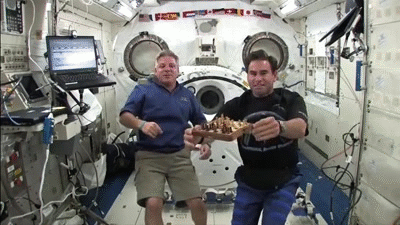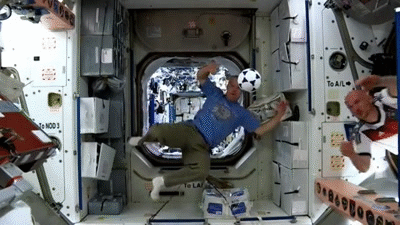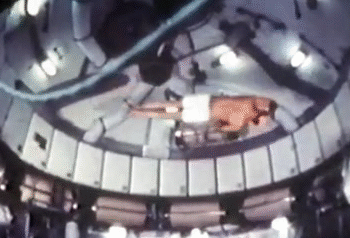How Many Is Too Many? (at Haley Concourse)

How many is too many? (at Haley Concourse)
More Posts from Mikeandrewphillips and Others






s p h e r e s


![[theawkwardyeti]](https://64.media.tumblr.com/046b112b4f884ce16c2fb168cbbc6fec/tumblr_nil2wuZqGm1swr8wlo1_500.png)
[theawkwardyeti]

The EM drive to be supposedly tested in 2017 - Fingers crossed for its success

Hitchhiking a Ride to Space
Have you ever packed for a long trip with a friend and ran out of space in your suitcase? Maybe your friend was nice and let your spare items hitchhike a ride in their bag? The following science experiments are doing something similar on our Space Launch System rocket.

Our Space Launch System (SLS) will be the most powerful rocket we’ve ever built and will enable astronauts in the Orion spacecraft to travel deeper into the solar system. This advanced launch vehicle will launch astronauts to an asteroid and eventually to Mars, while opening new possibilities for other payloads including robotic scientific missions to places like Mars, Saturn and Jupiter.

The primary goal of SLS and the Orion spacecraft is to launch future crewed, deep space missions. That said, an added bonus of this powerful rocket is the extra science it can carry. On it’s first mission (known as Exploration Mission-1, EM-1) SLS will carry 13 CubeSats (small satellites, each the size of a large shoebox) on its first flight as secondary payloads. These small satellites will perform various in-space experiments. In a way, these 13 CubeSats are ‘space hitchhikers’, catching a ride to deep space where they can gather data valuable to future exploration missions.

How were these 13 experiments selected? Great question. They were selected through a series of announcements of flight opportunities, a public contest and negations with our international partners.
These secondary payloads have a vast array of functions, from taking pictures of asteroids, to using yeast to detect impacts of deep-space radiation. Each month we will highlight one of these experiments on Tumblr and talk about all the exciting science they will do. Just to give you an idea of what these shoebox-sized satellites will do, we’ll give you a preview:
1. NEA Scout

NEA Scout, stands for: Near-Earth Asteroid Scout. This CubeSat will investigate an asteroid, taking pictures and observe its position in space.
2. BioSentinel

BioSentinel will be the first time living organisms have traveled to deep space in more than 40 years. It will use yeast to detect, measure and compare the impact of deep-space radiation on living organisms over long durations in deep space.
3. Lunar Flashlight

This experiment will look for ice deposits and identify locations where resources may be extracted from the lunar surface. It will demonstrate the capability to scout for useful materials and resources from lunar orbit.
4. Skyfire

Lockheed Martin’s Skyfire will perform a lunar flyby, collecting data to address both Moon and Mars Strategic Knowledge Gaps, or gaps in information required to reduce risk, increase effectiveness and improve the design of robotic and human space exploration missions, for surface characterization, remote sensing and site selection.
5. Lunar IceCube

Morehead State University’s Lunar IceCube will look for water in ice, liquid and vapor forms from a very low orbit of only 62 miles above the surface of the moon. The ability to search for useful resources can potentially help astronauts manufacture fuel and necessities to sustain a crew.
6. CuSP

The CubeSat mission to study Solar Particles, or CuSP, will be the first protype of an interplanetary CubeSat space weather station. It will observe space weather events hours before they reach Earth.
7. Luna-H-Map

Lunar Polar Hydrogen Mapper (LunaH) will enter a polar orbit around the moon with a low altitude. From there, it will produce maps of near-surface hydrogen.
8, 9, 10. Three Tournament Payloads

Three of the payloads riding along on this journey will be the winners of the Ground Tournaments portion of our CubeQuest Challenge. This challenge is designed to foster innovation in small spacecraft propulsion and communications techniques. Learn more about this challenge HERE.
11, 12, 13. International Partners
The remaining three payloads are reserved for international partners, and will be announced at a later time.
To stay updated on these experiments, visit: http://www.nasa.gov/launching-science-and-technology.html
Make sure to follow us on Tumblr for your regular dose of space: http://nasa.tumblr.com

7 Sports Astronauts Love Without Gravity (Including Football)
Astronauts onboard the International Space Station spend most of their time doing science, exercising and maintaining the station. But they still have time to shoot hoops and toss around a football.
From chess to soccer, there’s a zero-gravity spin to everything.
1. Baseball



Baseball: America’s favorite pastime. JAXA astronaut, Satoshi Furukawa shows us how microgravity makes it possible to be a one-man team. It would be a lot harder to hit home runs if the players could jump that high to catch the ball.
2. Chess

Yes, it’s a sport, and one time NASA astronaut Greg Chamitoff (right) played Earth on a Velcro chess board. An elementary school chess team would pick moves that everyone could vote for online. The winning move would be Earth’s play, and then Chamitoff would respond. About every two days, a move would be made. But who won the historic Earth vs. Space match? Earth! Chamitoff resigned after Earth turned its pawn into a queen, but it was game well played.
3. Soccer


NASA astronaut Steve Swanson put a new spin on soccer by juggling the ball upside down. However, he might not have considered himself upside down. On the space station, up and down are relative.
4. Gymnastics

NASA astronauts usually sign off their videos with a zero-gravity somersault (either forwards or backwards). But astronauts are also proficient in handstands, flips and twists. The predecessor to the International Space Station, the Skylab, had the best space for the moves. The current space station is a bit tight in comparison.
5. Basketball

Objects that aren’t heavy don’t move very well on the space station. They kind of just float. It’s like Earth, but exaggerated. For example, on Earth a beach ball wouldn’t go as far as a basketball. The same is true in space, which is why playing with a basketball in space is more fun than playing with a beach ball.
6. Golf

People talk about hitting golf balls off skyscrapers, but what about off the International Space Station? While golf isn’t a normal occurrence on the station, it’s been there. One golf company even sent an experiment to the station to find out how to make better golf clubs.
7. Football

Zero gravity doesn’t make everything easier. Astronauts need to relearn how to throw things because their brains need to relearn how to interpret sensory information. A bowling ball on the space station no longer feels as heavy as a bowling ball on Earth. When astronauts first throw things on the space station, everything keeps going too high. That would put a wrench in your spiral for a couple of months. But once you adjust, the perfect spiral will just keep spiraling!
Make sure to follow us on Tumblr for your regular dose of space: http://nasa.tumblr.com


